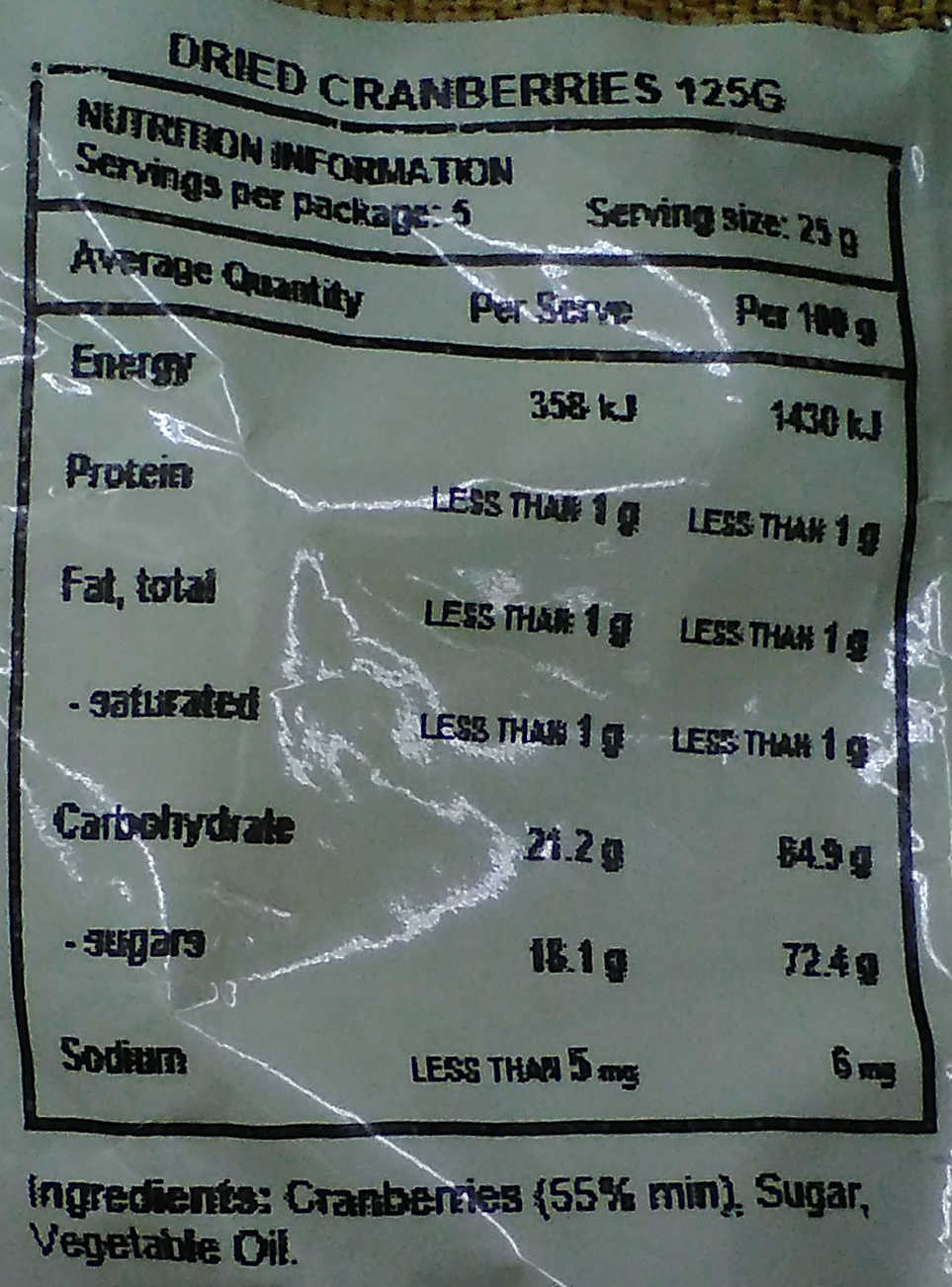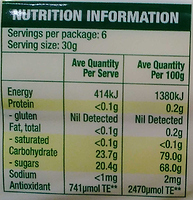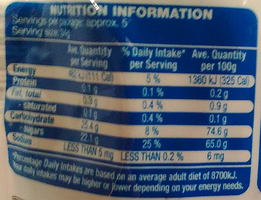What is wrong with that product? Who does not recommend it?
When we replace animal fats in our diets with seed oils we significantly increase the amount of harmful omega 6 fats in our cell membranes and this inevitably leads down a pathway to cancer and heart disease.
This is very bad for your health. Inflammation is correlated with heart disease, cancer and every disease in between! This is why it is so important to minimize the amount of omega-6 you consume in your diet.
We were told for many years that saturated fats were bad, however this advice has been reversed.
I am assuming this is a reply to my question about refined sunflower oil.
Oil is about 1% of the product, so a normal serving would be a fraction of a gram of oil. On what do you base your claim that such an amount is harmful and inevitably leads to cancer and heart disease? Please be specific.
Who exactly tells us that saturated fats are good and preferred to vegetable oils?
Omega 6 fats are present in cereals, durum wheat, poultry, eggs, nuts and most vegetable oils. This list would amount to a significant proportion of the calories eaten around the world each day. Cut out cereals alone and you will have widespread famine. So how do propose that we eliminate this fat from our diets?
All dried fruit has massive amounts of sugar which is not good for you. Eat fresh fruit.
Actually, unprocessed dried fruit is just fruit with some water removed (that’s how I do my apricots!), no “massive amounts of sugar” are added, so I think there is not much difference between eating the dried fruit and having a drink of water vs eating the fruit fresh.
For those who are interested, the following websites provide information on risks of sucralose, based on the best available scientific information:
https://www.fda.gov/Food/IngredientsPackagingLabeling/FoodAdditivesIngredients/ucm397725.htm
https://ec.europa.eu/food/sites/food/files/safety/docs/sci-com_scf_out68_en.pdf
And the list goes on. The EU report states “There is adequate evidence, both for sucralose and its hydrolysis products, that there are no concerns about mutagenicity, carcinogenicity, developmental or reproductive toxicity.”
It also found that it may have some toxicity at high intakes, but many things, even water, exhibit similar characteristics.
Is summary after many decades of research and human consumption, sucralose is safe to consume.
There is also research on the effect of artificial sweeteners including sucralose:
https://scholar.google.com.au/scholar?hl=en&as_sdt=0%2C5&q=effects+of+artificial+sweeteners
Refining of sunflower oil may result in lower levels of the oil’s nutrients; lighter flavor and color (resulting in a pale-yellow) and; lower levels of free fatty acids; phospholipids; polyphenols; and, phytosterols.
Sunflower oil has been consumed for many decades and has been proven to be safe. Like and high calorie foods and oils, excessive consumption can lead to long term health problems such as weight gain etc.
It is also possible when searching for information about foods and their additives, to find potential research which supports one views, like this one. At the end of the day, eating anything has risks, and if we worried about these risks, we wouldn’t eat.
It’s a question of degree. If the product that claims 30% sugar is cheaper than one that claims more than 70%, then how much are we paying for extra added sugar? Anyway, I was looking at only one figure and it seems the problem is not that simple. So I conducted a bit of a survey with my trusty smartphone camera.
Craisins Original:
McKenzie’s:
Angas Park:
Aldi (sorry about the image quality):
My question was about price, but trying to get my head around exactly what’s in the packets is confusing enough. I’ll think about money later.
Turns out, she went for capsules:
At $15 for the equivalent of 900 grams, the economics are not bad. Now I’m wondering what “equivalent” really means.
When berries are dried to the point they can be pulverised and encapsulated, what nutrients are left?
Maybe it could be one for Choice to test and analyse. As there are many variables with dried cranberries (moisture content, additives etc), it is hard to determine what each nutritional panel means if one decides to compare two ‘like’ products when making a purchase decision. One would have thought that cranberries would not be as variable as you have found.
Equivalent to fresh? Maybe ascorbic acid has been added to increase the Vitamin C content?
It has turned out to be far more interesting than I thought. If cranberries are this much of a minefield, what about other dried fruits? Not to mention those packaged as medicines. Is this indicative of the vagaries of food labeling?
I suspect that they are no different. Anecdotally, we find dried grapes in their various forms having different moisture contents (from being quite dry as in some breakfast cereals to moist as in bulk packs). They are also often covered with a oil to prevent them adhering to each other. Some also contain other additive to make them sound healthier, such as yoghurt coatings.
Apricots are also the same. I fondly recall when one could purchase Australian dried apricots…these were reasonably dry and chewy (and intense flavour). Most of the imported apricots are significantly moister (less flavour) than those Australian ones from yesteryear
Agree. If one looks at packaging of ‘healthy’ processed foods and supplements, one might gain the impression that they offer more than the ‘real’ fresh product. Possibly frozen vegetables may be an exception or foods which have been fortified with nutrients (such as bread and breakfast cereals - I say these as their benefits may be outweighed by their salts, sugars etc) to try to prevent deficiencies in the general community.
I think I have a healthy scepticism in relation to such products, and the reading I have done they don’t have the same nutritional value as the fresh equivalent. The complex nutritional matrix of fresh food can’t be replicated in a magical tablet/elixir/processed food product. Maybe one day it will, but not today.
I have not checked all available dried fruits but I think cranberries are an extreme case. I am not aware of any other fruit (please correct me if I am wrong) that has so much processing and so many ingredients. Fruits like apricots, plums, apples, grapes, figs etc are dried and may have sulphur dioxide applied along the way to improves the colour. You can also get untreated versions of some fruit if you look. Apparently some other fruits like cherries and strawberries can have sugar added but I haven’t seen those, unless you count glace cherries which I wouldn’t call dried fruit.
My take on the reason for the added treatment is to convert dried cranberries from an ingredient that the user has to process further (adding sugar 'cause they are so sour) to a convenience snack food that is pre-processed and ready to eat out of the packet like apricots.
I finally found the ingredients panel on Woolworths branded cranberries:
Not exactly prominent. The print on the package looks like 2-point Myopia to me.
Here’s the result of a comparison shop:

As has been pointed out, differences in moisture content make percentage by weight a bit useless, but it’s all we have. Should we be looking at proportion of fruit dry-matter instead? ![]()






